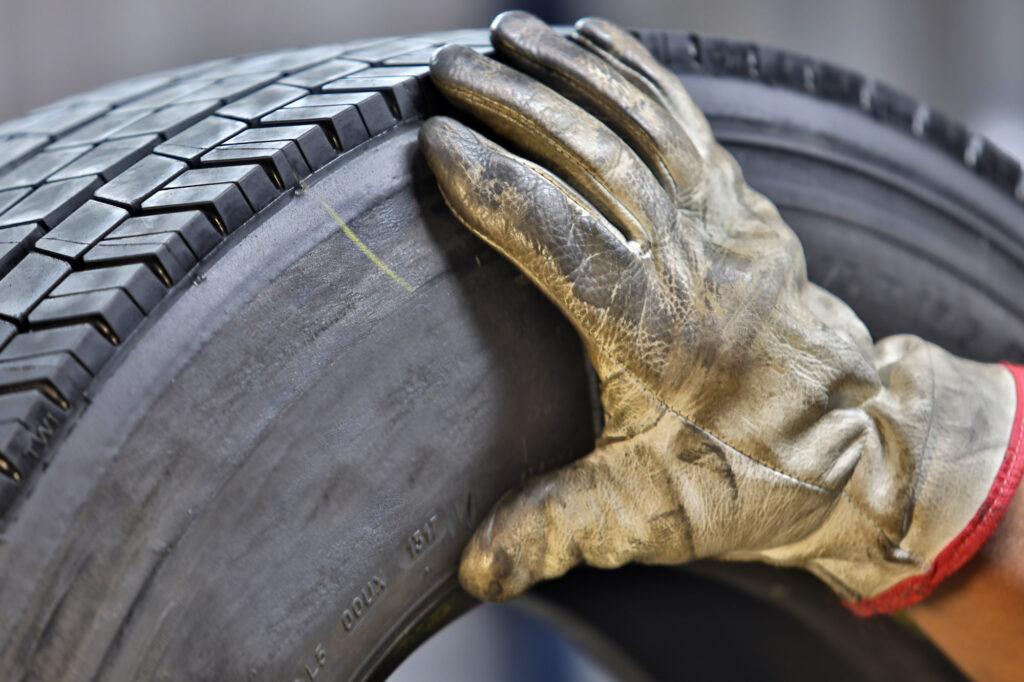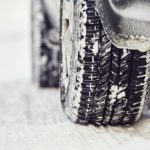Choosing the right set of replacement tires can be challenging, especially if you’re on a tight budget. Retread tires are more affordable than their newer counterparts, letting you get back on the road without breaking the bank. However, are they worth it? Are they a good fit for your vehicle?
What Is Tire Retreading?
Also called tire recapping, tire treading involves removing the old and worn-out tread layer of the tire and replacing it with a new tread to make the tire usable again.
Tire retreading is basically “recycling” old or worn-out tires.
If you’re considering tire retreading for your replacement needs, you can buy retread tires from reputable shops or opt for tire retreading services.
What Vehicles Usually Use Retread Tires?
Retread tires are more common in commercial vehicles than in passenger vehicles. That’s because cost-effectiveness and durability are crucial for commercial vehicles like buses, trucks, and trailers.
Remarkably, retreads constitute almost half of all replacement tires in the North American truck market.
Pros of Using Retread Tires

If your tires are worn out, replacing them with new ones is the best choice. However, if you prefer a more budget-friendly alternative, consider retread tires, which offer the following benefits:
More Savings
One of the most obvious advantages of buying retread tires is their lower cost than new and aftermarket tires. Despite essentially being “recycled” tires, they perform like new ones.
Less Environmental Impact
Interestingly, buying retread tires can help save the planet.
According to the Environmental Protection Agency (EPA), retread tires require 70% less oil to produce. Plus, they contain 75% post-consumer materials (materials that are “recycled” or already used by consumers).
Because retread tires use fewer raw materials during manufacturing, they don’t contribute much to pollution. Also, retreading extends the life of existing tires, which means there will be fewer tires sent to the landfill.
Cons of Using Retread Tires
Below are some of the drawbacks of buying retread tires. However, note that some can be outdated or subjective because retread tire manufacturers never stop improving their tires.
Inferior Quality
Quality control standards can vary depending on the manufacturer. Some retread tires don’t have the same quality as new tires, leading to performance and durability issues.
In California, retreaded tires are considered just as safe as new tires. That’s because studies conducted over the last two decades have shown that retreads are equally safe. Also, a lot of manufacturers use only quality tires that undergo multi-point inspections.
In California, retreaded tires are considered just as safe as new tires.
–Anthony Harlin, ASE Certified Master Automobile Technician
Stability Issues
Many drivers claim that retread tires feel less stable compared to new tires when traveling at high speeds. While this might be true in the past, a lot of retread manufacturers have improved their retread process to produce retread tires that perform just like new tires.
Limited Warranty Coverage
Retread tires also come with warranties. However, the coverage isn’t as good as those of new tires. Warranty coverages can vary depending on the tires’ manufacturer, so make sure to review the warranty coverage of the tires you’re buying regardless if they’re new or recapped.
Do Retread Tires Cause Bad Gas Mileage?
When properly manufactured and maintained, retread tires don’t affect gas mileage. In fact, retread tires with high-quality treads and casings can improve fuel efficiency.

Are Retread Tires Safe?
Yes, retread tires are safe as long as they’re manufactured correctly and according to standards.
Tire casings actually don’t wear out as badly as the treads, especially when properly maintained. Also, retread tires go through the same rigorous inspection as new tires, so you can be sure they’re safe to use if you source them from legitimate shops.
Are Retread Tires Legal?
Yes, it’s legal to use retread tires. There are no states that ban the use of retread tires on any type of vehicle. Some even encourage their use like California, provided you follow the state’s rules on retread tires.
In California, you can’t use retread tires on the front wheels of a bus or farm labor vehicle unless they meet the requirements set by the state. You can check out section 27465 of the Vehicle Code to learn more about California’s requirements regarding tread patterns.
If you’re planning to buy retread tires, make sure to check the laws that apply in your state.
How Long Do Retread Tires Last?
The lifespan of retread tires will depend on various factors like the manufacturer’s retreading process and how well you maintain them.
Generally, retread tires have the same lifespan as new tires, and it’s best to replace them after six years. However, you don’t have to wait for six years to replace your tires if they’re already worn out.
On average, if you’re driving a commercial vehicle, your retread tires are expected to last between three to four years if you drive 12,000 to 15,000 miles annually.
You can also have your tires retreaded again. Generally, you can retread tires up to two to three times, depending on the type of vehicle you’re driving. If you’re not sure whether your tire can be recapped again, you can consult a professional.
Keeping Your Tires In Good Condition
Whether you’re buying new or retread tires, it’s important to keep them in good condition to stay safe while on the road. Inspect your vehicle tires at least once a month. You can check out our tire inspection guide to learn more.
Any information provided on this Website is for informational purposes only and is not intended to replace consultation with a professional mechanic. The accuracy and timeliness of the information may change from the time of publication.
































